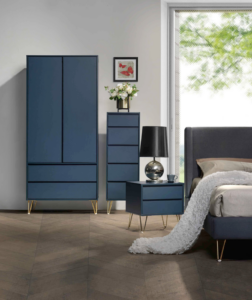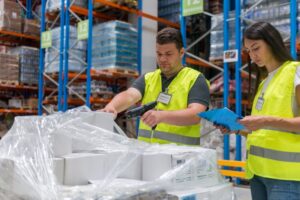2020 has been the year of change and adaption. COVID vaccines won’t become widely accessible until the spring of 2021, and it’s still unclear how the coronavirus and the flu will impact the winter months. As a result, retailers need to brace for the very real potential of more shelter-in-place orders.
During the mandated closures of the spring and summer of 2020, many retailers experienced tremendous growth in web traffic and ecommerce sales. Some even saw ecommerce volume eclipse sales at their smaller stores. While demand remains high, supply levels aren’t expected to return to “normal” until mid-next year.
As a result, the key to success in 2021 will be adaptability—an ability to quickly pivot based on current situations. Now that we have experience from 2020 under our belt, here are eight lessons you can use to move forward.
1. Store closures are not binary
Just as schools have created different attendance models that vary based on the ever-changing health situation, retailers must do the same. It’s not all open or closed, there are several scenarios to account for, such as capacity restrictions that reduce foot traffic or full closures of brick-and-mortar locations.
Retailers need to be prepared to change models on a dime. With 93% of retailers making their website a priority during the pandemic, websites have become a sort of “front door” for brands and retailers.
Many have already pivoted to offer virtual market/showroom experiences. Other options include virtual one-on-one calls or even sending wood and fabric samples so customers can assess the materials from home. This requires training your sales associates and digital teams on how to make the most of each scenario.
2. Multi-channel ≠ the same experience everywhere
Instead of duplicating your customer experience across your channels, each touchpoint must be purpose-built for the way customers use it. For instance, mobile often is used to browse, but conversion rates are higher on desktop and even more so in store. The role of mobile also varies based on the location of the user. If the customer is at home, it’s the source of browsing. When they’re in the store, it’s the source of additional product information that will help finalize a decision to purchase.
Retailers need to view digital and offline stores not as competitors, but as allies that complement each other’s capabilities. Mapping the customer journey and the role of each channel through the buying process and adapting the experience in each channel will help meet the customer where they are all of the time. Get some inspiration from these brands that offer great customer experiences across channels.
3. Customers still expect a high level of service
Being able to accept an order online doesn’t mean the transaction stops there. Consumers expect the same level of service from furniture retailers no matter where they make the purchase. Furniture remains a high-ticket item, and, for the foreseeable future, customers want informed assistance. Retailers need a plan for delivering it in world that’s eCommerce only, “normal,” and a hybrid of the two.
In each scenario, the goal of the sales associate will be the same: maximize sales. However, their role will vary by setting. In store, your associates are accustomed to working with qualified shoppers. Online, however, shoppers are often earlier in their journey. Sales associates need to be trained on how to work with earlier-stage customers using a digital toolset.
5. Digital store vignettes can boost performance
In-store merchandising has been a fantastic way to help shoppers discover and buy other items they might not have researched before visiting, resulting in higher ticket prices in store. To duplicate the benefit online, retailers need to be mindful of the customer experience.
Personalization can help to deliver the feel of a one-on-one interaction, providing relevant information that helps customers buy more. The goal is to make engaging with your brand effortless for the customer. In fact, retailers that can create strong customer experiences are more resilient during recessionary periods.
6. Financing is an important piece of the puzzle
More than half of furniture purchases are financed. As customers increasingly use ecommerce to pre-shop before visiting physical locations, offering credit options that work online and in store can ensure you maintain that seamless transition.
Retailers that offer credit opportunities for customers can help grow order value in store as well as online. Allowing for different payment types and adopting waterfall programs enables retailers to get credit to as many customers as possible. Early in the shopping process, let customers know they can qualify for financing and what their options are. Enabling the process to start and end online and baking it into the flow as opposed to an afterthought is critical.
7. A sense of urgency can cause customers to act
Stock-outs were commonplace during 2020. Virtually all of the 600+ supply chain professionals polled reported a supply chain disruption due to COVID-19. But you can’t take written orders to the bank, only cash after the items are delivered.
Low inventory numbers, however, can become a selling tool, leveraging the fear of missing out (FOMO), an ingrained part of the human condition. Customers can be pushed to act by social proof, a psychological phenomenon where people conform to the actions of others under the assumption that those actions are good and correct behavior. Providing real-time inventory information can get people to act. And social proof can also come into play through the use of product ratings, case studies, endorsements and more.
8. Be prepared for volatility in demand
As of August 2020, 74.2 million consumers had completed a home remodel project in the last year, and more than 15 million Americans said they were very likely to purchase a new home in the next six months, reports Home Furnishings Business magazine. Spending on home goods reached record levels in the second quarter of 2020, with demand continuing into the third and fourth quarters.
Times are good right now, but with a new incoming president, an unknown stimulus package, and an unpredictable virus, consumers may not be as confident in 2021 as they were in 2020. Good or bad, retailers should be prepared for bumpy entrance into the new year until the country settles into a new normal.
Reflect on your experience
As you move into 2021, take time to review your experience during 2020. What will you carry into the new year and what will you leave behind? It’s important to understand the changes you made in 2020 and the impact they delivered.
- A rising tide lifts all boats. Did you benefit from that or did you make real changes that will have a lasting impact?
- Be honest about the competitive landscape. Did you gain share during the crazy times of 2020?
- What helped you acquire new customers from the competition?
- Will you be able to sustain relationships with these new customers when things get back to “normal”?
- How are your new customers different in any way from your historic customer base?
- And if your demand shrinks, what is your scale-back plan?
How Shoptelligence can help
As you address the changes that 2020 brought and navigate what’s ahead, Shoptelligence can help. Regardless of the demand 2021 may bring, we offer tools that help you grow revenue per buyer. For example, our Merchant Assist capability aligns your merchandising efforts with available products so you can sell products you have in stock. Virtual Sales Assistant enables sales associates onsite and in store to provide a seamless experience and support sudden pivots between channels. And our Email Marketing tool drives repeat business with highly personalized campaigns that create one-on-one interactions.
To learn first-hand how Shoptelligence can help you better serve customers now and in the future, schedule a demo today.






